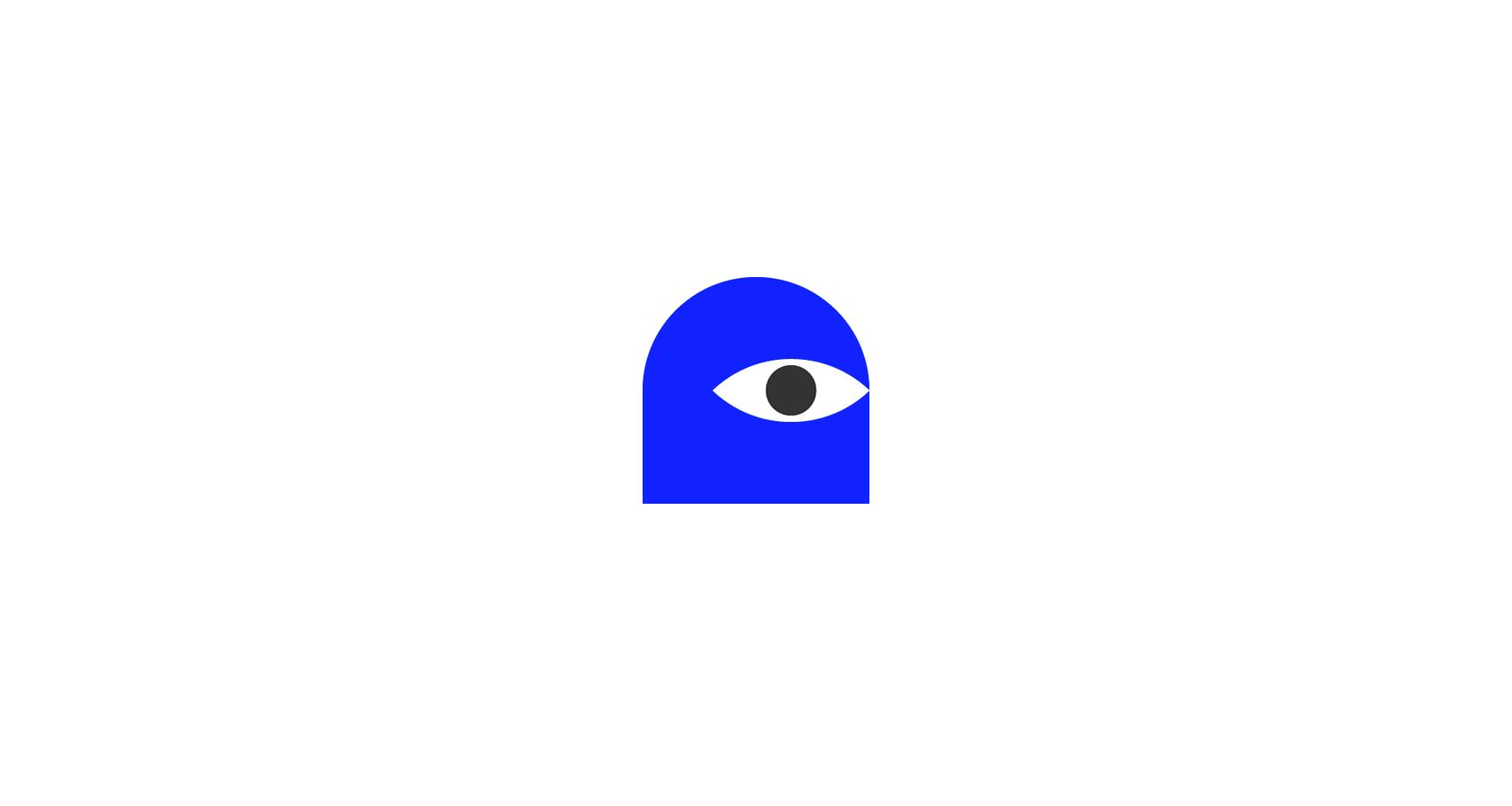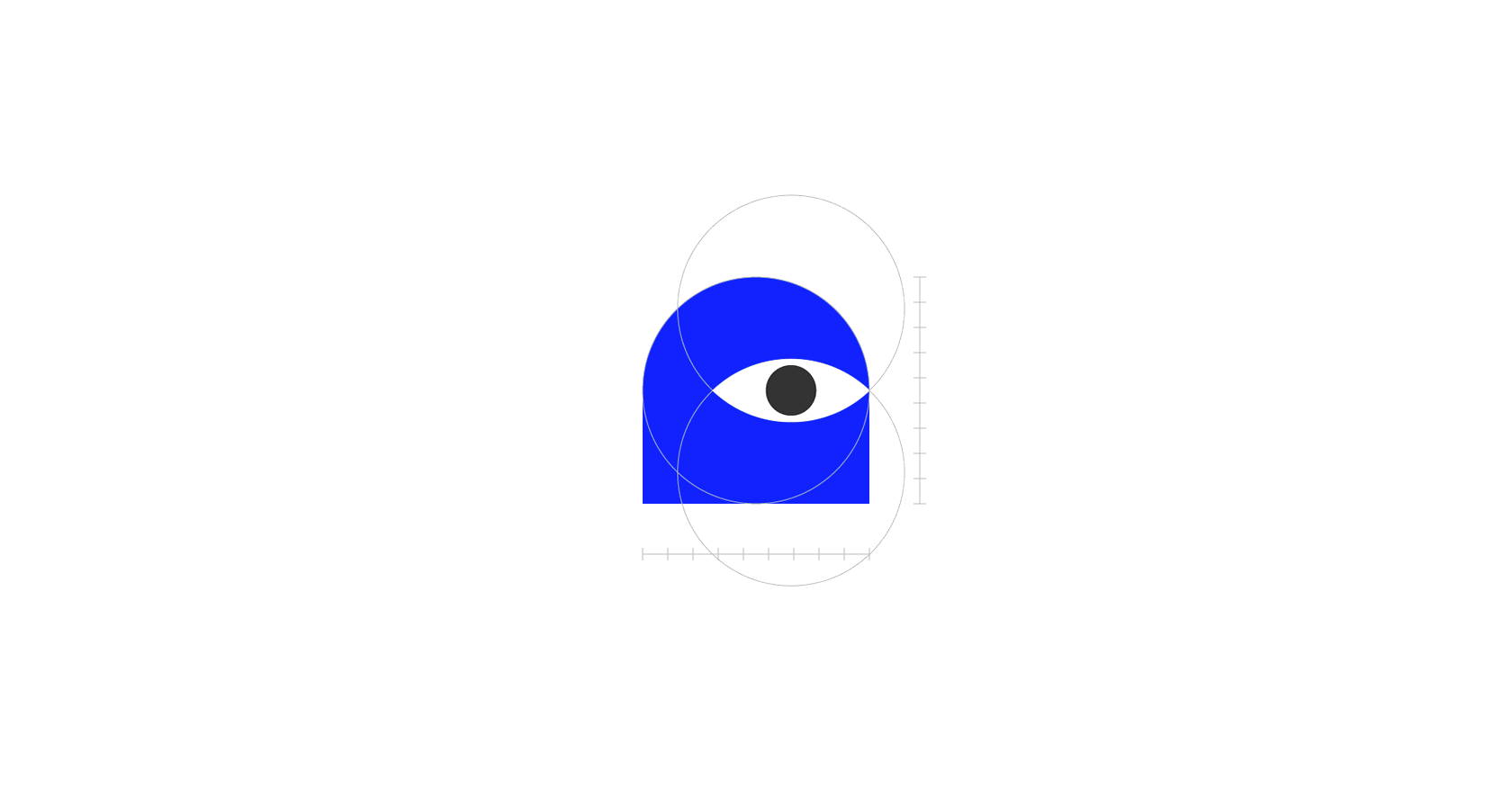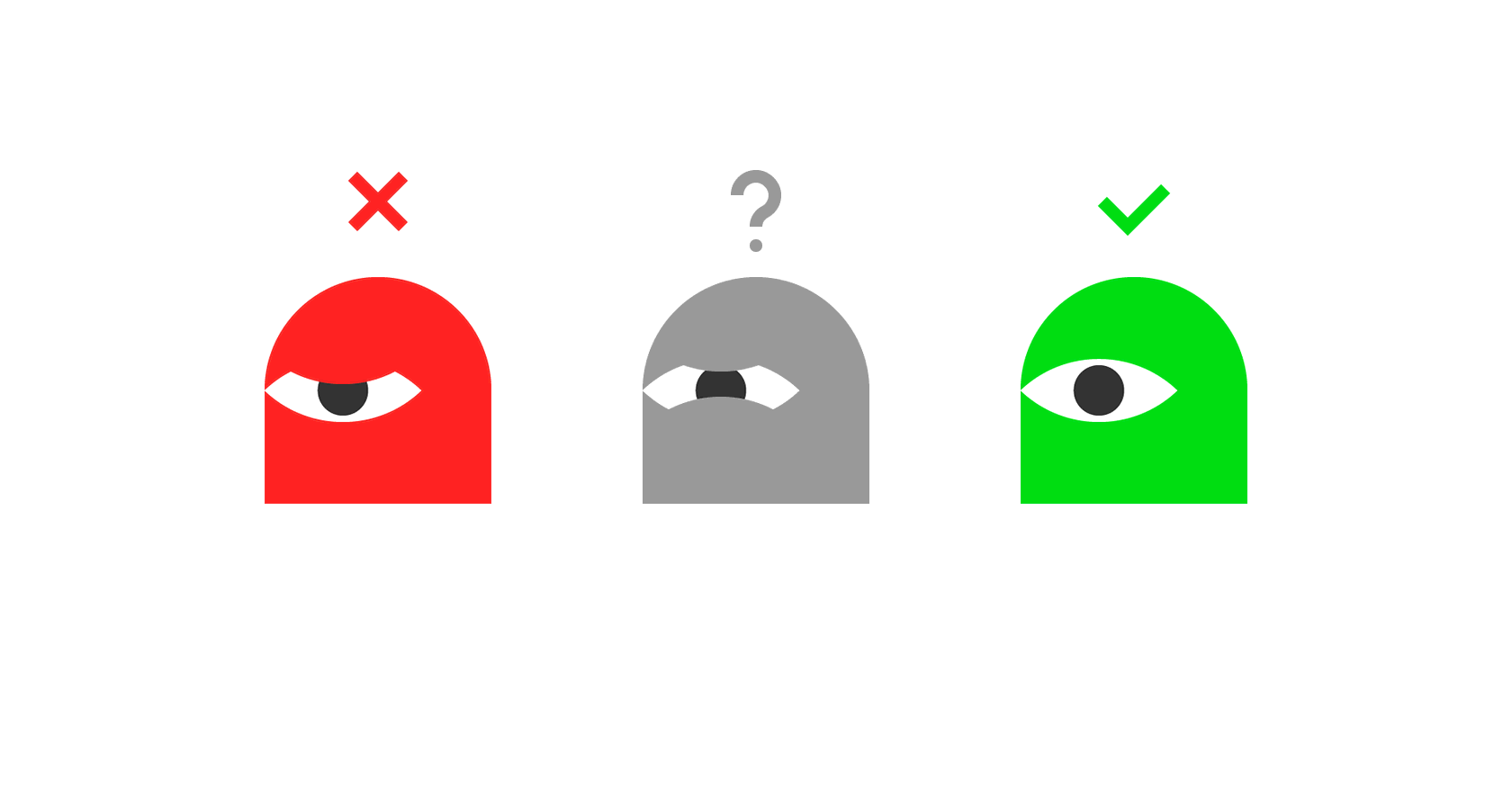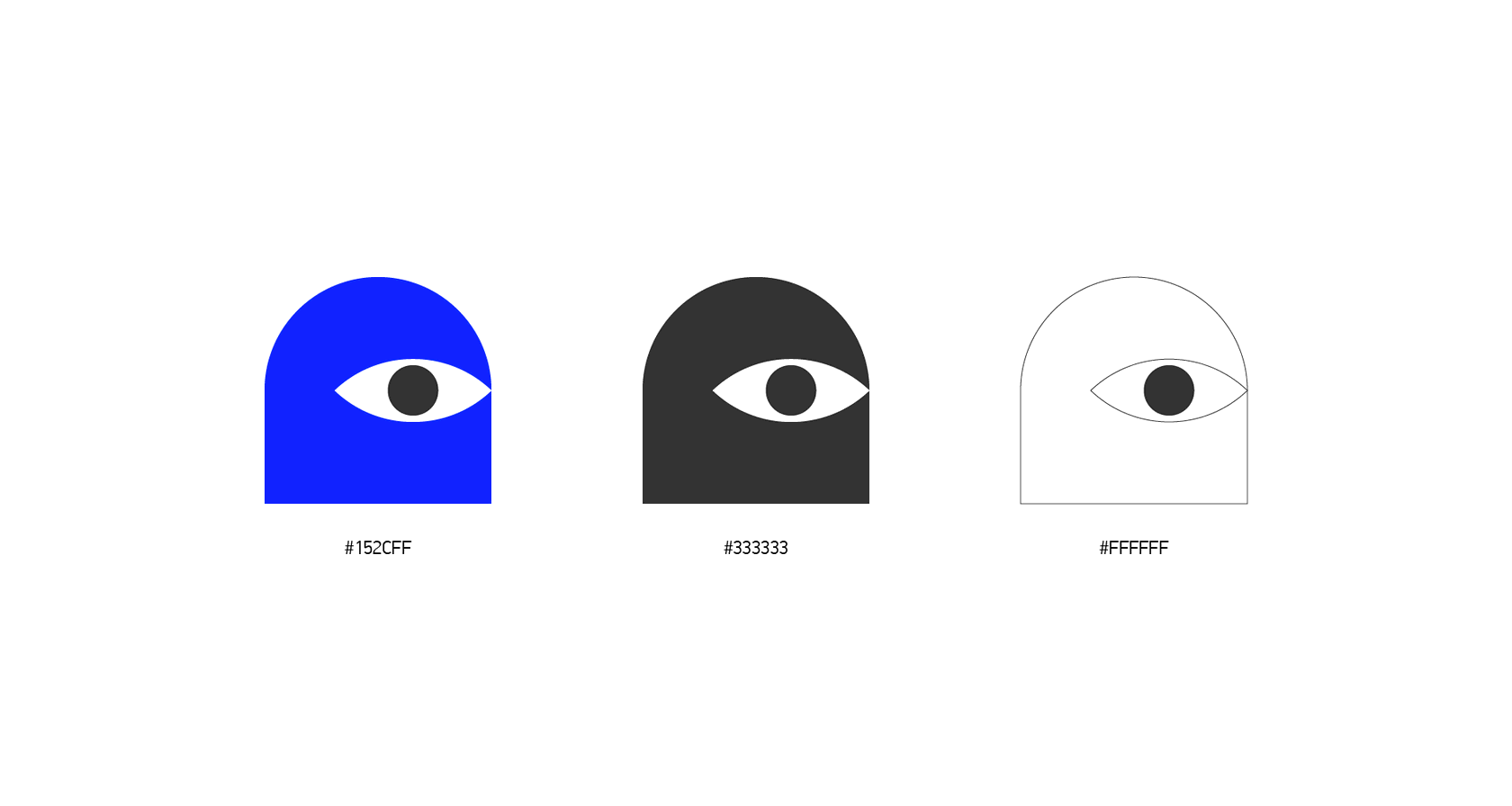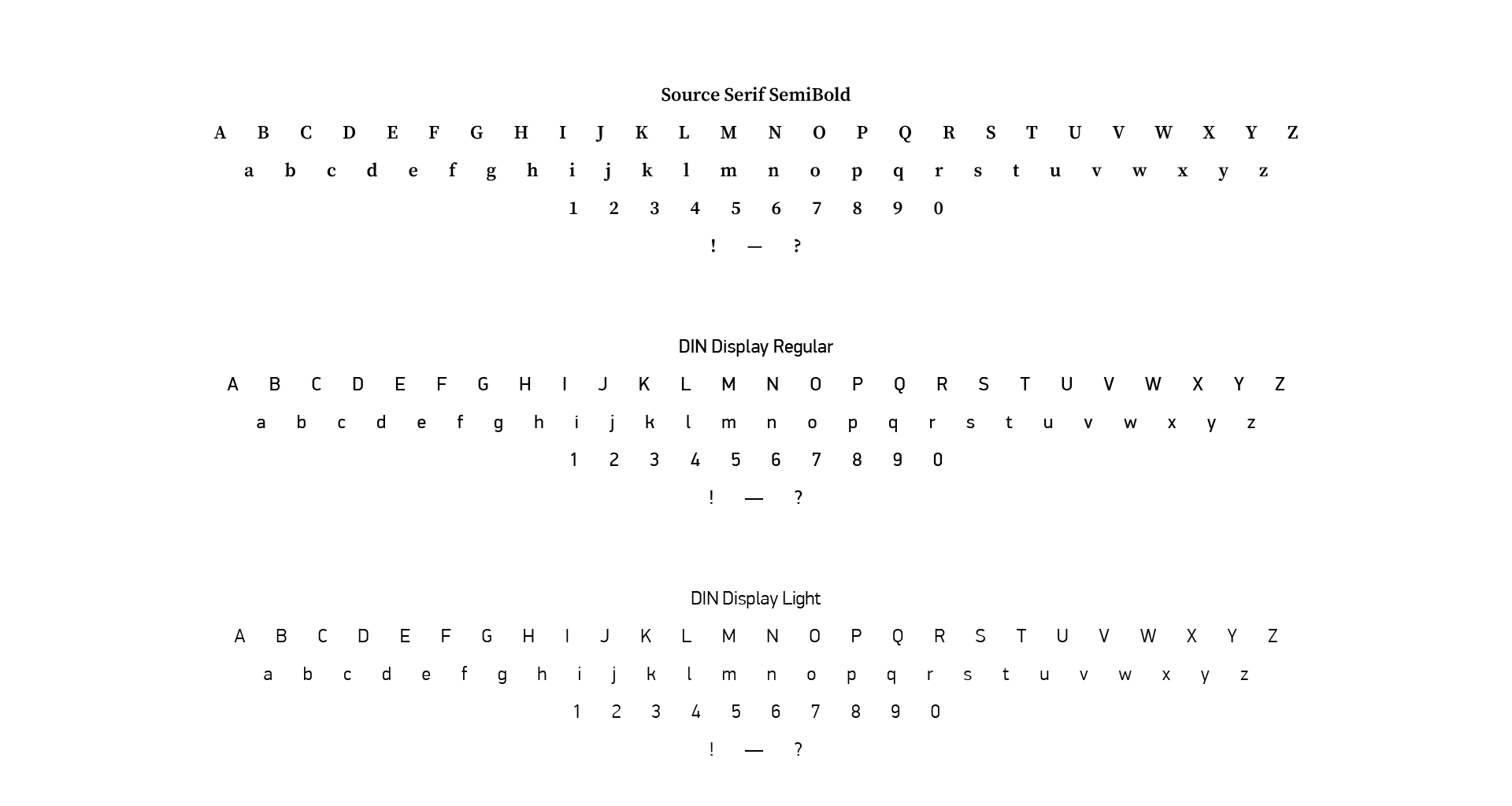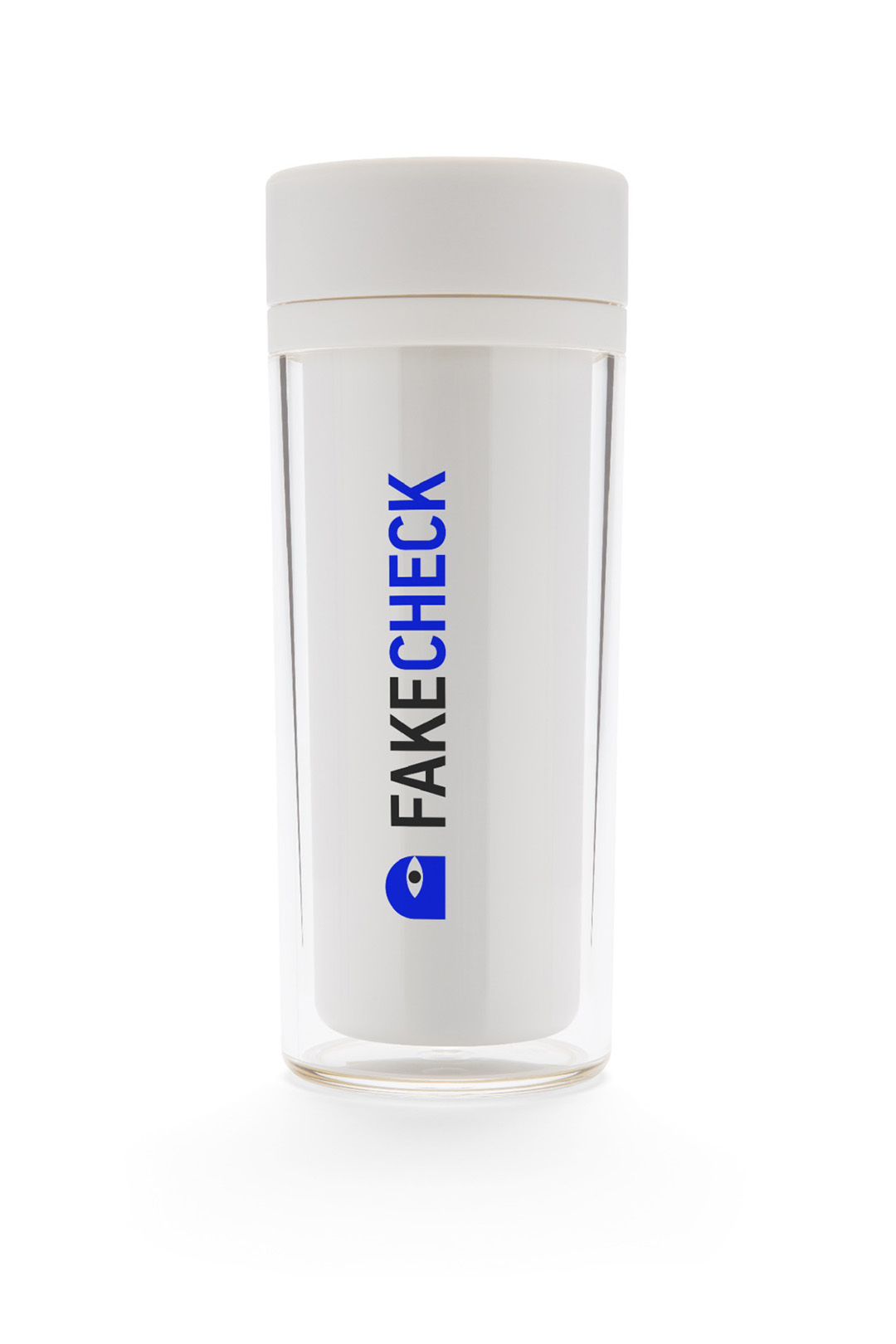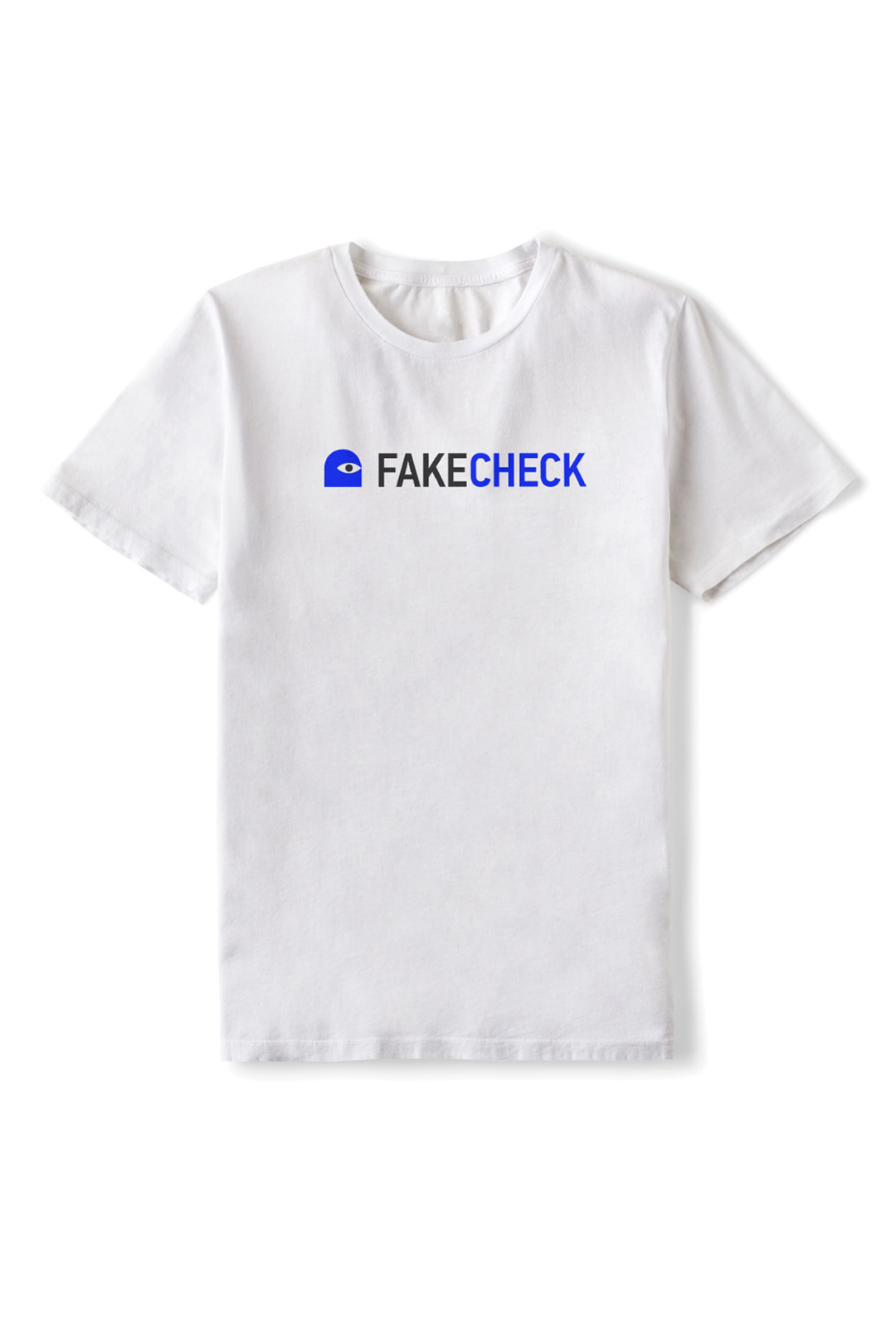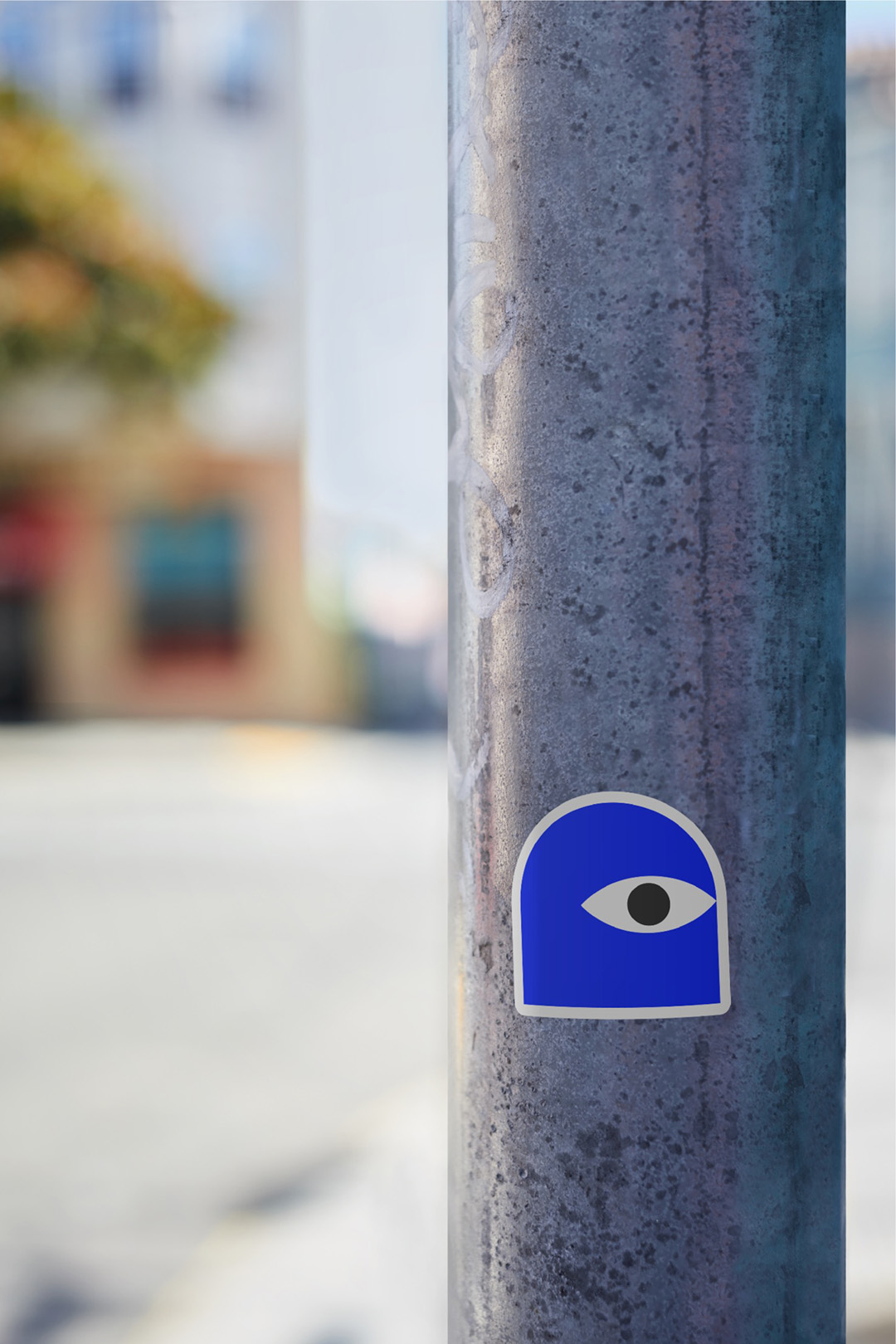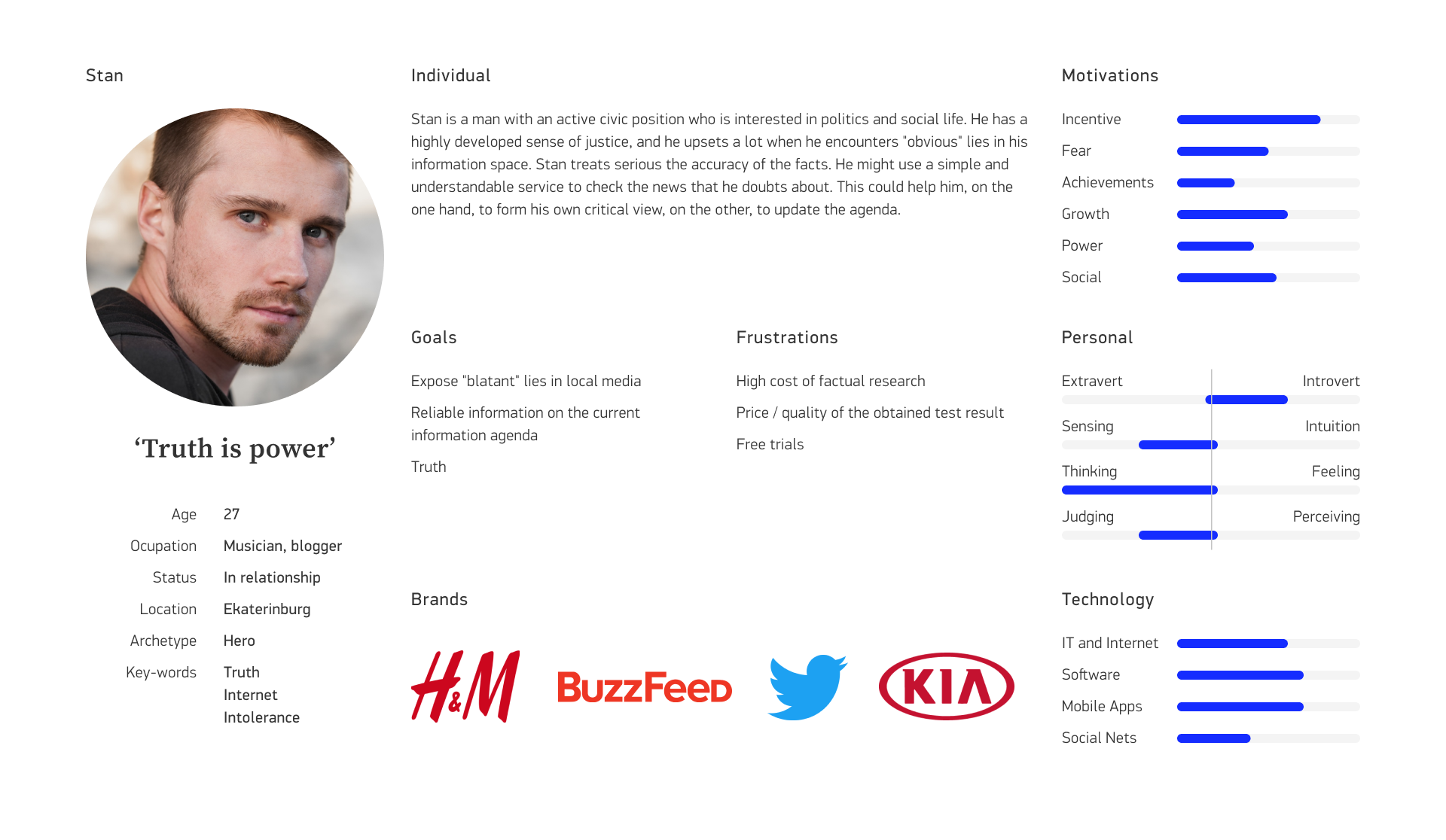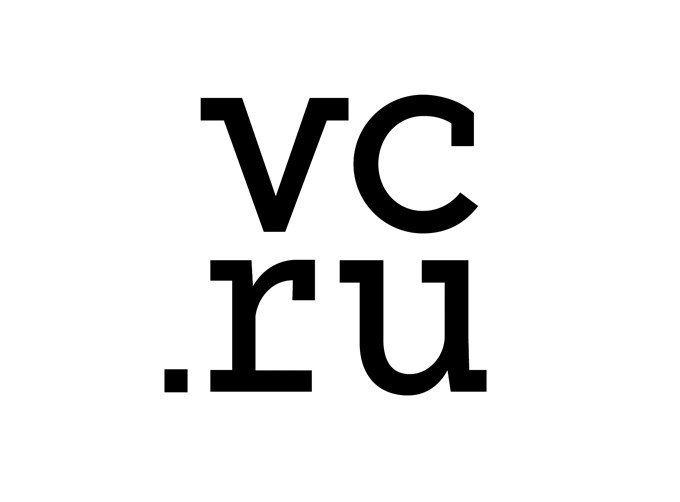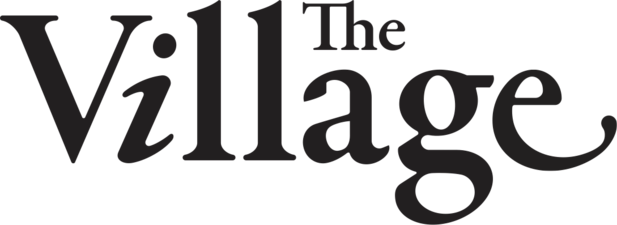Fakecheck
Fakecheck is an independent Russia-based service providing a tool for factological review of any article or publication in mass media and on social networks. First-alike service provides manual research according to a professional community-developed algorithm and evaluates publications with a fakemeter scale from entirely true to completely false. My task was to create an identity, develop proper UX flow and build a ready-to-launch version of the product.
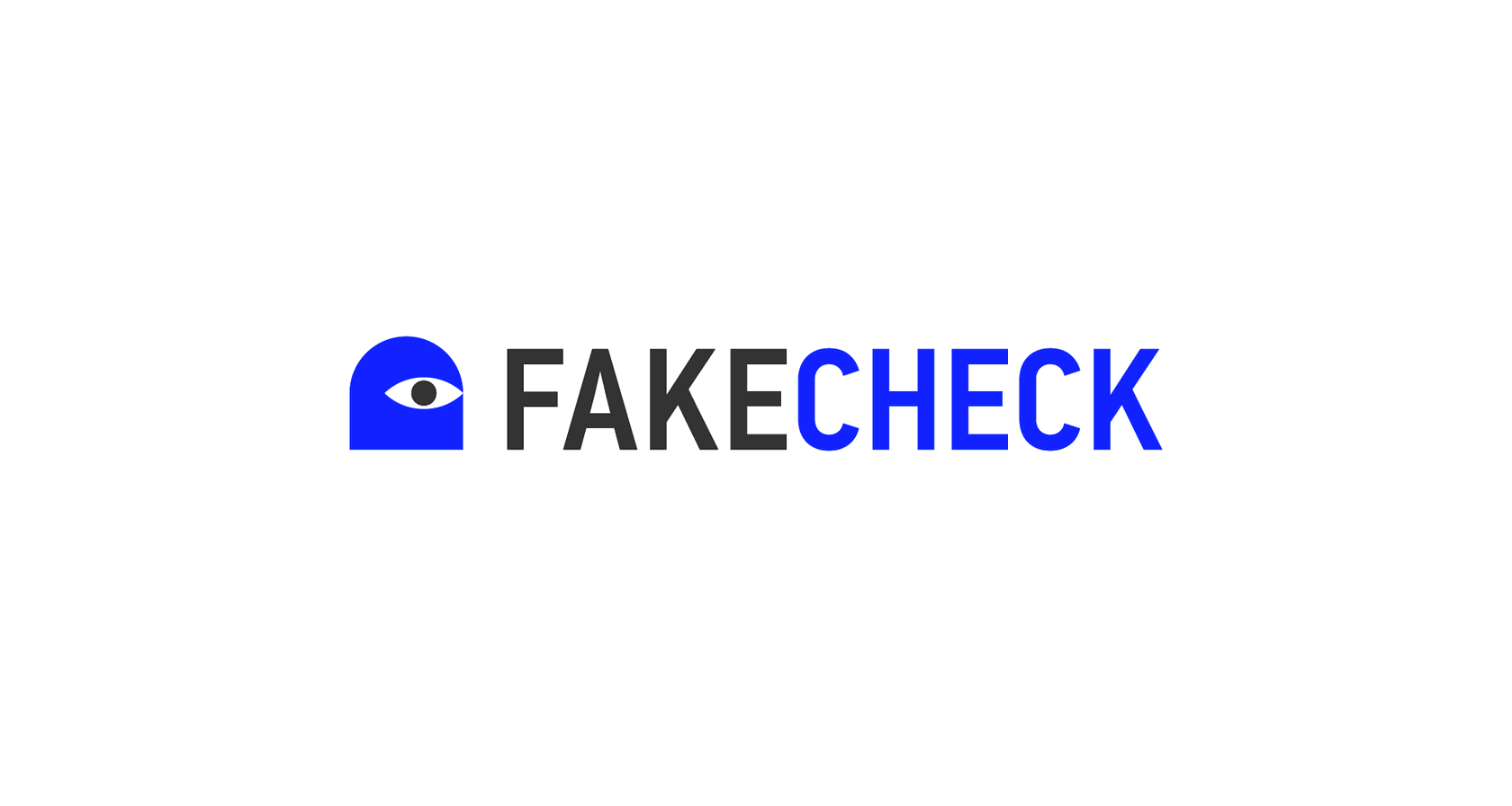
Identity
The initial concept was to make Fakecheck look less like a mass media tool and more like a service. In order to do that, a dynamic brand character was developed. Together with clear typography, the character forms a recognisable and distinctive logo. It's playful and scalable. The character is made up of a combination of quite dissimilar images: a finger – a symbol of reading text carefully line by line; an all-seeing eye – the one from whom it's hard to hide the truth; and a full face mask, or balaclava – an item with quite a rebellious feel. It's a postmodern approach, let's say.
Fakemeter
The other important graphic element is the fakemeter. It presents the results of each piece of reviewed material. The fakemeter layout is the opposite of a flat, one-dimensional style, and it brings a vivid visual contrast to the page. Therefore, neo-skeuomorphism was the approach here, and Figma was the tool. The fakemeter is proportionate in size to the brand character and has an eye-catching and animated design.
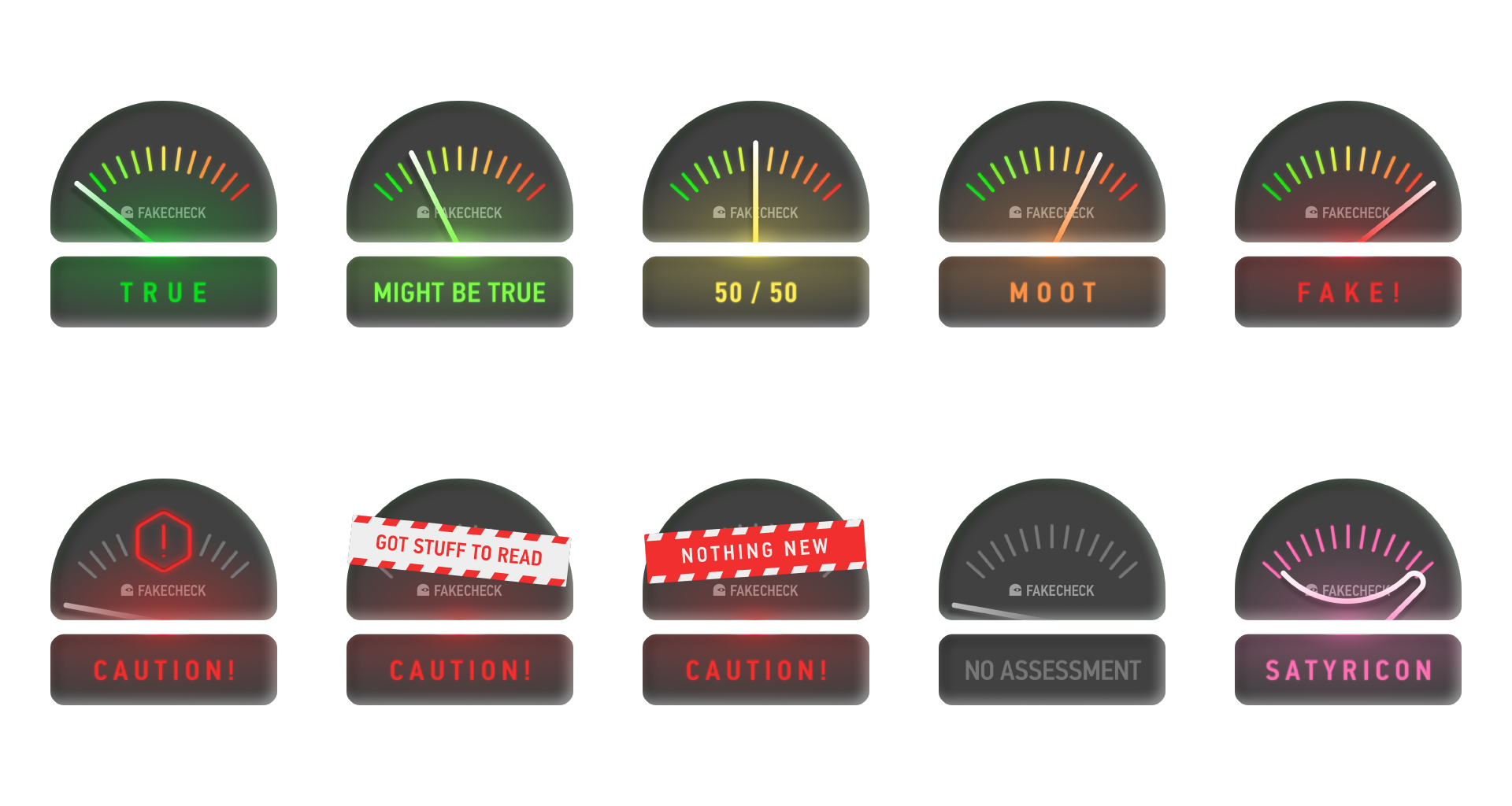
Colour & Typography
The colour spectrum on the fakemeter scale runs from red (fake) to green (true) with yellow (50/50) in the middle. Blue is an off-scale colour, a symbol of neutrality and impartiality. It's digitally bright and truly sharp. The background colour is newspaper black – the dark grey colour of newsprint.
Two fonts were used in the design: Source Serif is mainly for headings and parts of articles reviewed by Fakecheck (e.g. source materials), and Din is for review results and service information (e.g. internal messaging).
Two fonts were used in the design: Source Serif is mainly for headings and parts of articles reviewed by Fakecheck (e.g. source materials), and Din is for review results and service information (e.g. internal messaging).
Lovely Swag
Why build a start-up, aside from saving the world? For fabulous swag, of course!
Product design
Fakecheck came to me with a well-thought-out and thoroughly researched idea with solid product and marketing analysis. Moreover, they had a strong minimum viable product (MVP), which allowed them to test the service prior to a large-scale launch. That meant my task was to review all of the findings and build the launch version with clear messaging and an intuitive, easy-to-use interface.
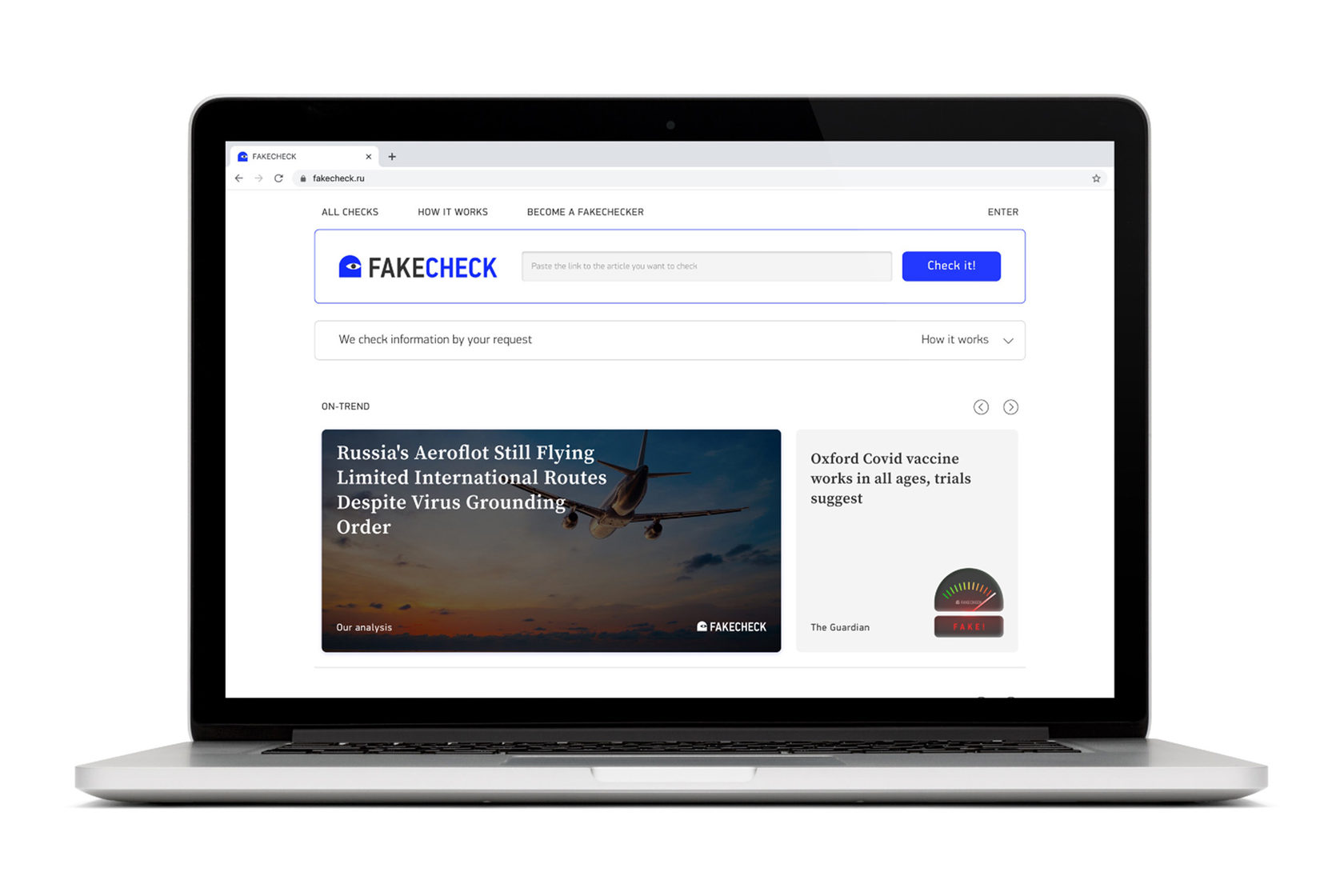
User Personas
Fakecheck targets three types of users – legal entities, individuals and celebrities (as a subcategory of individuals for quote checking) – with different business strategies for each. Fakecheck offers pre-purchased packs for legal entities, a pay-as-you-go plan for individuals, and a special plan for celebrities that allows them to validate the information others have said about them.
User-Flow
Task flow was focused on the process of setting up an account. This was a complex undertaking because the process had to be similar for all user types to facilitate transfers from one account type to another, should a user choose to do this. The process also had to be intuitive. Adding to the complexity were the limitations of various payment options and the list of possible search results. With this in mind, the goal of this phase of the project was clear messaging and a simple flow.
Prototype
An interactive Figma prototype was built to test the flow solution. After a series of internal tests performed with the development team and the project's co-founders, the service was reviewed by media industry professionals and active press readers. This soft launch proved that the service had a sustainable, well-balanced flow. It also uncovered one of the users' main frustrations – service plans. The solution was to clearly separate and describe each plan and not overload the user with choices. Another issue was the typography – headings were too thin and hard to read – so I had to redesign the visuals.
Design System
While working on the prototype, I started to collect all the elements used to form a design component base. The goal was to clean up the styles and simplify the work process of the development team. The design system was created in Figma with a hidden core component for design components of the same type. So, for example, a filled button and a line button are based on a core button hidden component for fast and easy cross-component customisation.
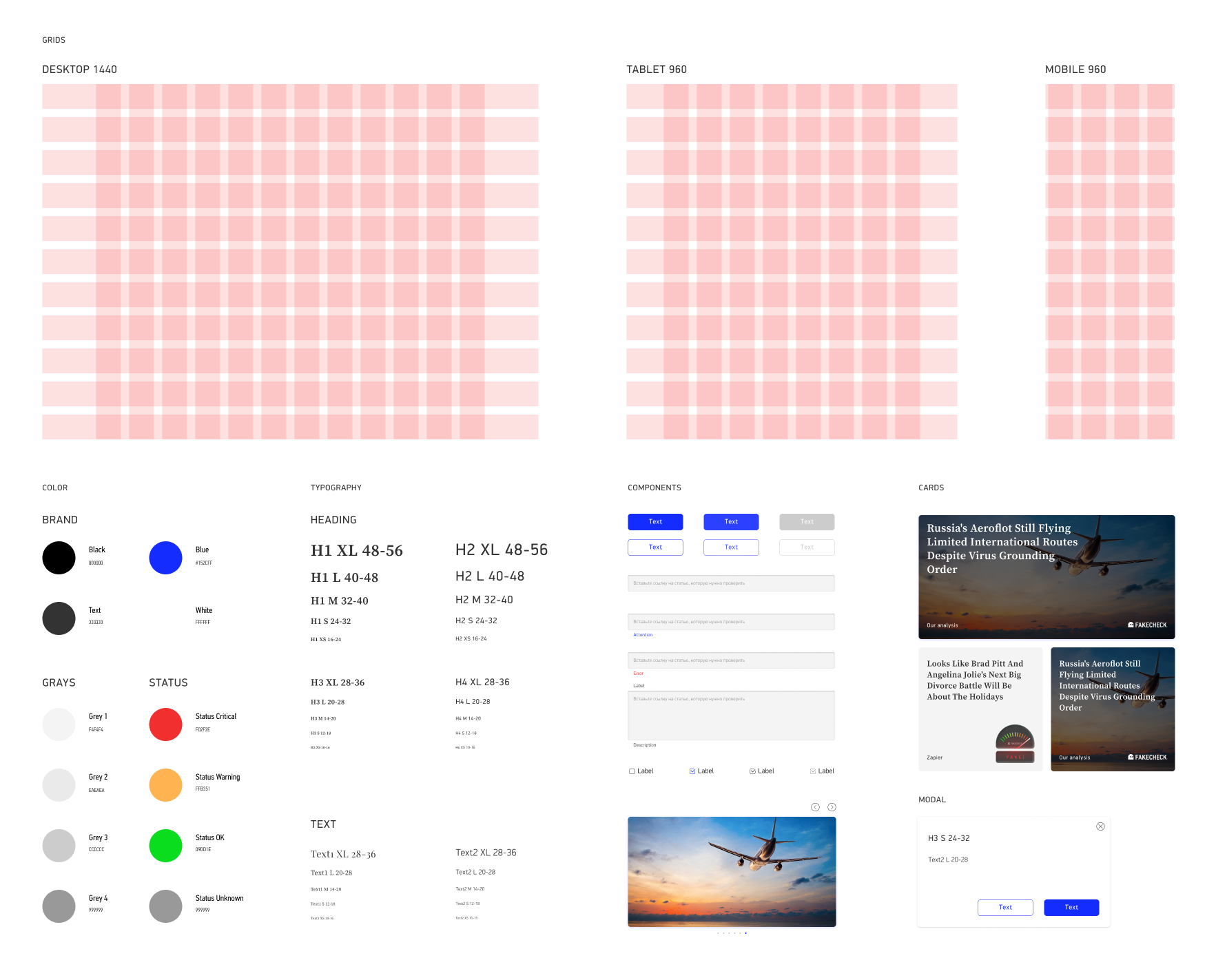
Aaarrr Structure
Have you heard of Pirate Metrics or Aaarrr Funnel? It's a product management approach used to attract customers and keep them on your site. Aaarrr stands for awareness, acquisition, activation, retention, revenue and referral, or Aaarrr in pirate's language. I used this method to structure messaging and activation on the Fakecheck main page.
Awareness: Awareness is at the top of the page with the 'How does it work?' drop-down (this information is hidden for regular users and easy to find for newbies).
Acquisition: Fakecheck cards are examples of reviewed materials. Most of them are hot media and on-trend.
Activation: The Fakemeter on each card brings the user to an 'a-ha' moment where they feel a striking contrast between the article title, the source of the article – usually a popular publication – and the Fakecheck result.
Retention: This list is divided into On-trend, Fake and True categories to encourage users to scroll further and stay longer on the page.
Revenue: The 'Send material to check' button is placed at the end of the main page as a logical conclusion to the user experience. The button is also placed at the very top of the page for returning users to facilitate fast onboarding.
Referral: The final barrier breaker is a set of reviews from users and mass media professionals.
Awareness: Awareness is at the top of the page with the 'How does it work?' drop-down (this information is hidden for regular users and easy to find for newbies).
Acquisition: Fakecheck cards are examples of reviewed materials. Most of them are hot media and on-trend.
Activation: The Fakemeter on each card brings the user to an 'a-ha' moment where they feel a striking contrast between the article title, the source of the article – usually a popular publication – and the Fakecheck result.
Retention: This list is divided into On-trend, Fake and True categories to encourage users to scroll further and stay longer on the page.
Revenue: The 'Send material to check' button is placed at the end of the main page as a logical conclusion to the user experience. The button is also placed at the very top of the page for returning users to facilitate fast onboarding.
Referral: The final barrier breaker is a set of reviews from users and mass media professionals.
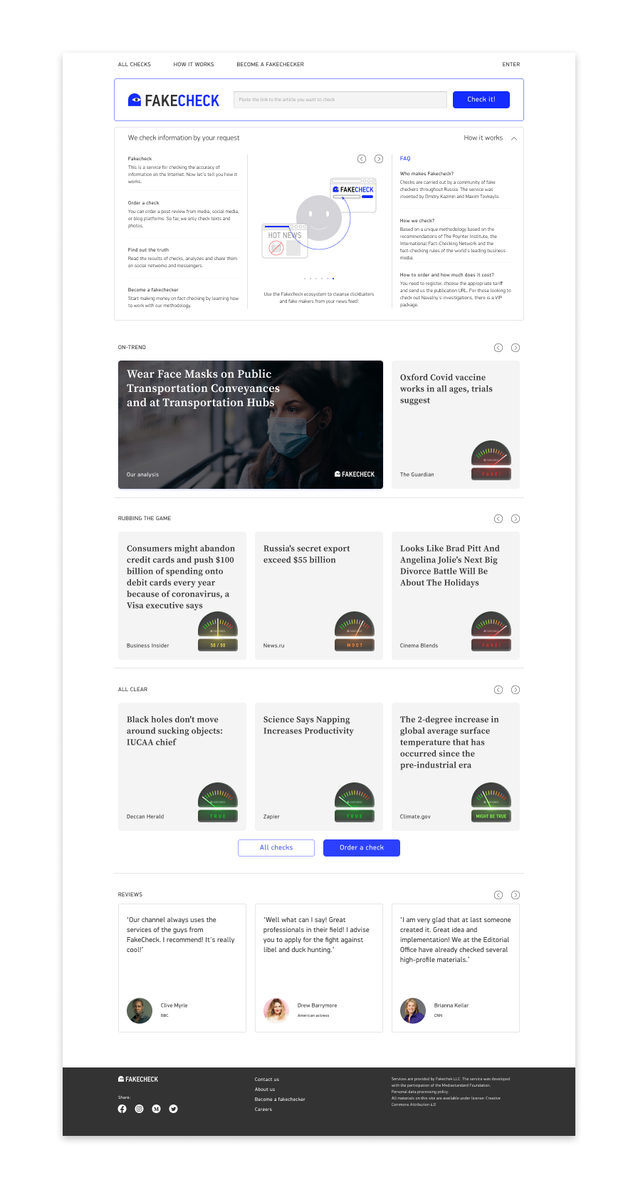
Final Product
Fakecheck service page turns clean and clear. The service can be used on any device (mobile, tablet and desktop) without functional limitations. Rapid prototyping and testing helped to identify the most practical user flow. The site will continue to be fine-tuned as more user feedback is received.
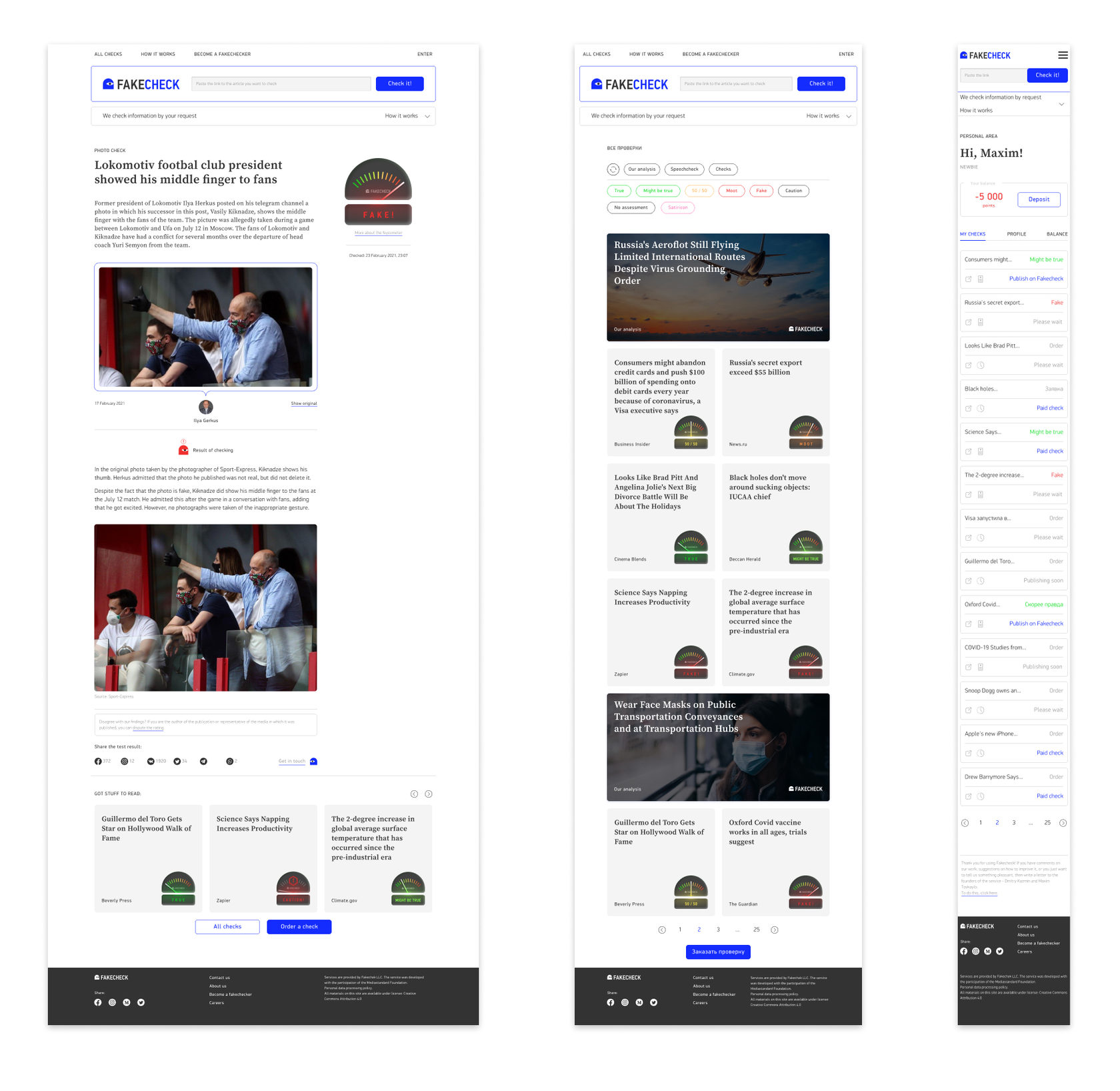
Featured
On launch day, Fakecheck attracted 13,000 unique visitors and caught the attention of top-rated media in both the press and product spheres. Fakecheck was selected as the digital product of the day and was featured in Forbes, The Bell, Daily Moscow, Afisha, TJ, VC, The Village, Sostav, Polit.ru and many more. In the 24 hours following the launch, Fakecheck jumped to the second line in Google and the first line in Yandex searches.
References
Dmitry Kazmin
Fakecheck is a start-up attempt to disrupt the professional fact-checking software market, creating a convenient, scalable service that is in demand by any kind of client. Fakecheck grabs the best from independent fact-checking projects like Snopes.com, PolitiFact or Full Fact while trying to automate the content review process like Factmata.
During my work as a journalist and head of a non-profit organisation that held dozens of events a year, I worked with various designers and art directors in both the tech and creative design fields.
The key difference between Stas and everyone else is his understanding of how to adapt a creative idea to the needs of the product and his amazing punctuality at each phase of the process. He does not just fulfil the technical aspect of a task. If you explain the purpose of the product and are on the same page as Stas, you don't have to worry about the quality of the design. When you hit roadblocks or get confused trying to improve the client's UX, do not hesitate to consult with Stas and ask for help. Stas's punctuality helps you clearly plan the timing of product development, including team adjustment.
With Fakecheck, Stas created the project identity from scratch, employing his talents to adapt the ideas proposed by the co-founders. The fakemeter and components he developed allow the consumer to quickly onboard and understand the product. Thanks to Stas's proactivity and his useful tips, we significantly optimised the product UX, making the service seamless and intuitive.
I recommend Stas as a highly qualified specialist for performing tasks of any complexity, including those with tight deadlines.
During my work as a journalist and head of a non-profit organisation that held dozens of events a year, I worked with various designers and art directors in both the tech and creative design fields.
The key difference between Stas and everyone else is his understanding of how to adapt a creative idea to the needs of the product and his amazing punctuality at each phase of the process. He does not just fulfil the technical aspect of a task. If you explain the purpose of the product and are on the same page as Stas, you don't have to worry about the quality of the design. When you hit roadblocks or get confused trying to improve the client's UX, do not hesitate to consult with Stas and ask for help. Stas's punctuality helps you clearly plan the timing of product development, including team adjustment.
With Fakecheck, Stas created the project identity from scratch, employing his talents to adapt the ideas proposed by the co-founders. The fakemeter and components he developed allow the consumer to quickly onboard and understand the product. Thanks to Stas's proactivity and his useful tips, we significantly optimised the product UX, making the service seamless and intuitive.
I recommend Stas as a highly qualified specialist for performing tasks of any complexity, including those with tight deadlines.
